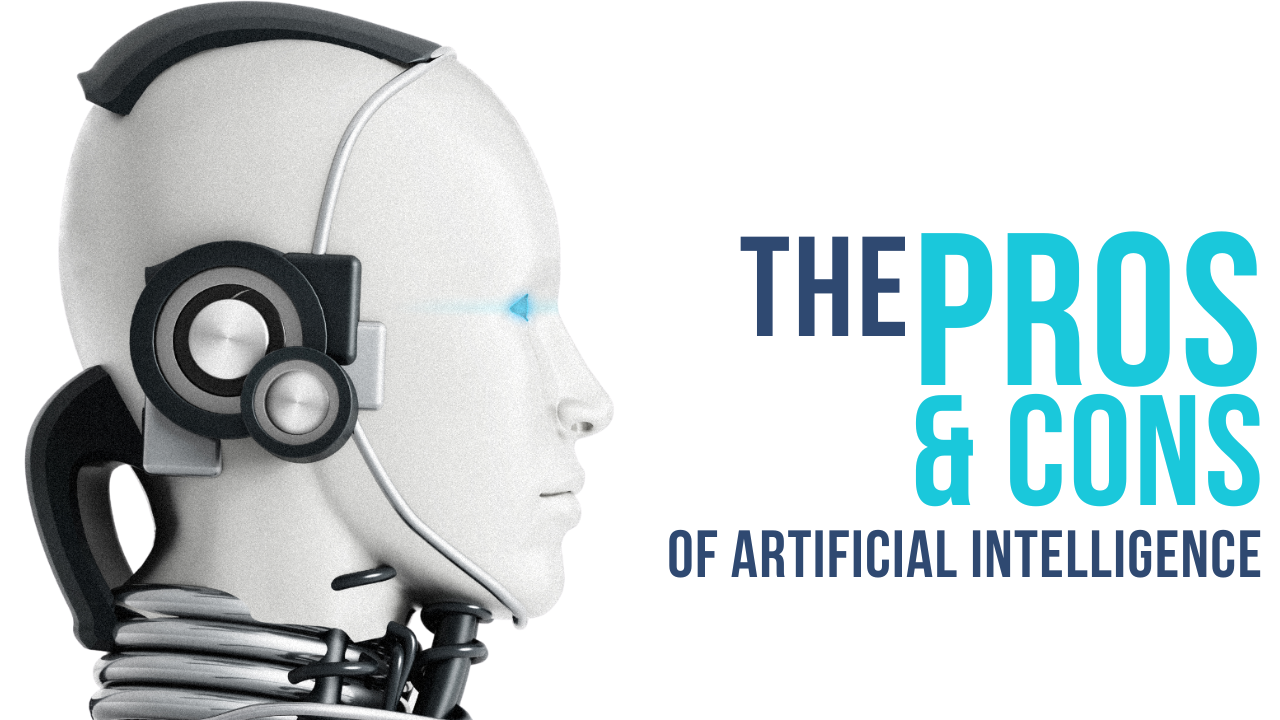The Good, the Bad, and the Artificial: Exploring the Pros and Cons of AI

We’re not sure if you’ve heard about it or not, but there’s this little thing called Artificial Intelligence (AI for short) that’s been causing quite a stir in recent months. Granted, it’s been around for a while now (we’re talking as far back as the 60s), but due to its rapidly evolving nature, it’s now on the lips - and minds - of nearly everyone. From large corporations racing to stay in the lead of new developments to high school kids trying to pass off ChatGPT-generated term papers, a lot of people are keen to jump on the AI bandwagon.
On the flip side, there are a lot of people interested in jumping OFF the AI bandwagon or, at the very least, tapping the breaks. Leaders like Elon Musk, Steve Wozniak, and “The Godfather of AI” Geoffrey Hinton have all spoken out and urged prudence; artificial intelligence HAS evolved rapidly, and they argue we may not yet know what the long-term effects (both positive and negative) might be.
Despite this, the technology shows no signs of slowing down, and every day it’s making news about what it’s helped people achieve. Because the truth of the matter is AI can transform the way you do business, and if you’re not tapping into that potential, you can bet your artificial ass your competitors are. And while we don’t always condone the “if you can’t beat ‘em, join ‘em” mentality (successful entrepreneurs are successful because they’re not following the crowd), in situations like this, going along with the ‘popular crowd’ is necessary or you and your biz will probably get left behind.
Benefits of Incorporating AI into Your Business
- Efficiency: AI can automate routine tasks (data entry, data analysis, customer service, etc.), saving you and your employees time to focus on more important tasks
- Better decision-making: AI has the capability to analyze vast amounts of data in a short amount of time and provide valuable insights to help you make more informed decisions.
- Personalization: Using AI-powered tools can create a personalized experience for your customers by analyzing their preferences and behaviors
- Saves money: Implementing AI can save costs associated with manual labor, as well as improve overall efficiency (which ultimately leads to higher profits).
- Competitive advantage: By incorporating AI into your business (the right way), you can stay ahead of your competitors who either haven’t adopted the new tech yet or aren’t using it to its full potential.
Potential Negative Consequences of Incorporating AI into Your Business
- Job displacement: AI has the ability to automate tasks that once relied on humans.
- Lack of accountability: AI systems are only as good as the data they are fed. If they’re given biased or inaccurate info, it can result in discriminatory or incorrect outcomes.
- Cybersecurity threats: Like all technology, AI systems are vulnerable to cyber-attacks and, if breached, could result in losing a lot of sensitive information.
- Dependence: Relying too heavily on AI can lead to a loss of human skills and expertise, which will be detrimental in the long run. AI shouldn’t replace human intelligence; it should enhance it.
- Technical challenges: Depending on how you want to incorporate AI, there will likely be technical difficulties and/or the need to hire people with specialized skills and expertise in that area.
Artificial intelligence, when coupled with human ingenuity and circumspection, has the ability to radically change many areas of our lives for the better.
But it’s not a free pass.
It should make us more productive, not lazier. It should make us work smarter, not harder. It should allow us to unlock new possibilities beyond our imagination and achieve what was previously impossible. Remember, it’s still uncharted territory. As business owners and entrepreneurs, it’s in our best interest to embrace this change while also approaching its implementation thoughtfully and strategically.



